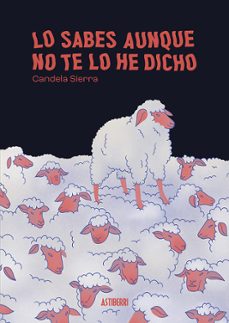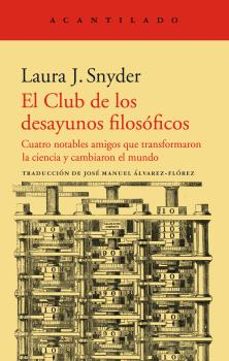Imprescindibles
Ficción
No Ficción
Ciencias y tecnología Biología Ciencias Ciencias naturales Divulgación científica Informática Ingeniería Matemáticas Medicina Salud y dietas Filología Biblioteconomía Estudios filológicos Estudios lingüísticos Estudios literarios Historia y crítica de la Literatura
Humanidades Autoayuda y espiritualidad Ciencias humanas Derecho Economía y Empresa Psicología y Pedagogía Filosofía Sociología Historia Arqueología Biografías Historia de España Historia Universal Historia por países
Infantil
Juvenil
#Jóvenes lectores Narrativa juvenil Clásicos adaptados Libros Wattpad Libros Booktok Libros de influencers Libros de Youtubers Libros Spicy Juveniles Libros LGTBIQ+ Temas sociales Libros ciencia ficción Libros de acción y aventura Cómic y manga juvenil Cómic juvenil Manga Shonen Manga Shojo Autores destacados Jennifer L. Armentrout Eloy Moreno Nerea Llanes Hannah Nicole Maehrer
Libros de fantasía Cozy Fantasy Dark academia Hadas y Fae Romantasy Royal Fantasy Urban Fantasy Vampiros y hombres lobo Otros Misterio y terror Cozy mistery Policiaca Spooky Terror Thriller y suspense Otros
Libros románticos y de amor Dark Romance Clean Romance Cowboy Romance Mafia y amor Romance dramatico Romcom libros Sport Romance Otros Clichés Enemies to Lovers Friends to Lovers Hermanastros Slow Burn Fake Dating Triángulo amoroso
Cómic y manga
Novela gráfica Novela gráfica americana Novela gráfica europea Novela gráfica de otros países Personajes, series y sagas Series y sagas Star Wars Superhéroes Cómics DC Cómics Marvel Cómics otros superhéroes Cómics Valiant
eBooks
Literatura Contemporánea Narrativa fantástica Novela de ciencia ficción Novela de terror Novela histórica Novela negra Novela romántica y erótica Juvenil Más de 13 años Más de 15 años Infantil eBooks infantiles
Humanidades Autoayuda y espiritualidad Ciencias humanas Economía y Empresa Psicología y Pedagogía Filosofía Historia Historia de España Historia Universal Arte Cine Música Historia del arte
Ciencia y tecnología Ciencias naturales Divulgación científica Medicina Salud y dietas Filología Estudios lingüísticos Estudios literarios Historia y crítica de la Literatura Estilo de vida Cocina Guías de viaje Ocio y deportes
Laura J. Snyder
Recibe novedades de LAURA J. SNYDER directamente en tu email
Filtros
Del 1 al 3 de 3
NORTON (W.W.) 9780393077469
The remarkable story of how an artist and a scientist in seventeenth-century Holland transformed the way we see the world.On a summer day in 1674, in the small Dutch city of Delft, Antoni van Leeuwenhoeka cloth salesman, local bureaucrat, and self-taught natural philosophergazed through a tiny lens set into a brass holder and discovered a never-before imagined world of microscopic life. At the same time, in a nearby attic, the painter Johannes Vermeer was using another optical device, a camera obscura, to experiment with light and create the most luminous pictures ever beheld.In Eye of the Beholder, Laura J. Snyder transports us to the streets, inns, and guildhalls of seventeenth-century Holland, where artists and scientists gathered, and to their studios and laboratories, where they mixed paints and prepared canvases, ground and polished lenses, examined and dissected insects and other animals, and invented the modern notion of seeing. With charm and narrative flair Snyder brings Vermeer and Van Leeuwenhoekand the men and women around themvividly to life. The story of these two geniuses and the transformation they engendered shows us why we see the worldand our place within itas we do today.
Ver más
Tapa dura
Acantilado 9788418370250
En el siglo xix, cuatro hombres, tras descubrir en la Universidad de Cambridge su pasión compartida por el progreso científico, deciden reunirse los domingos por la mañana para hablar del estado de la ciencia en Gran Bretaña y en el mundo. Inspirados por el gran politico y reformador cientifico Francis Bacon, los miembros del Club de los desayunos filosoficos aunaron fuerzas para promover una nueva revolucion cientifica. William Whewell, Charles Babbage, John Herschel y Richard Jones, investigadores de prestigio que llevaron a cabo importantes descubrimientos en distintos ambitos, fueron los ultimos filosofos naturales, que no solo estuvieron a la vanguardia de la modernizacion de la ciencia, sino que engendraron una nueva especie: el cientifico. La historiadora Laura J. Snyder explora en este deslumbrante ensayo las motivaciones politicas y religiosas, las amistades y enemistades, y la sed de conocimiento y de poder que impulsaron a estos extraordinarios hombres, protagonistas de una autentica revolucion intelectual.
Ver más
Tapa blanda
Acantilado 9788416748587
En el verano de 1674, en la ciudad de Delft, Antoni van Leeuwenhoek descubrió, mirando a través de una minúscula lente, el mundo microscópico. Al mismo tiempo, en la buhardilla de una casa cercana, Johannes Vermeer empleaba otro instrumento optico—
Ver más
Tapa dura
Del 1 al 3 de 3


























